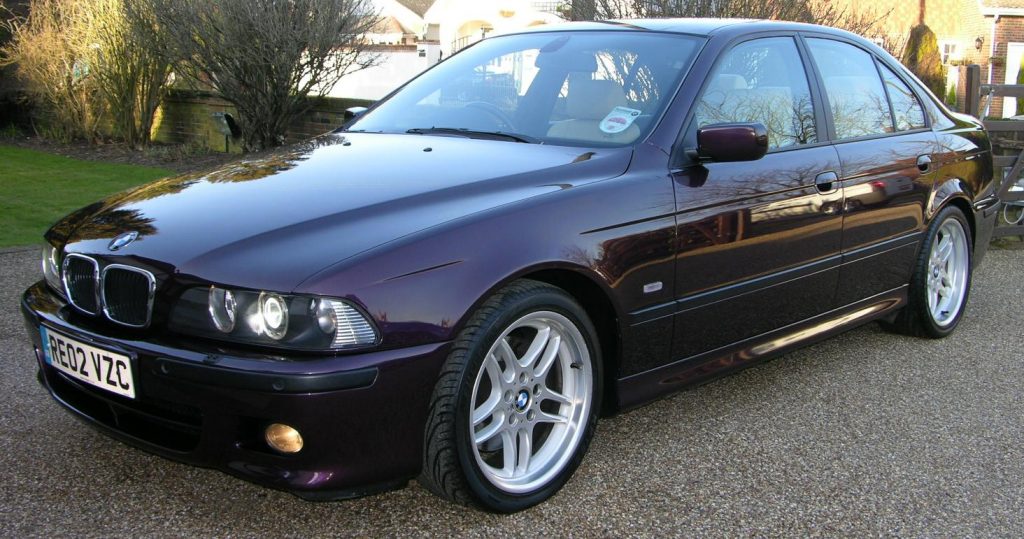History
The fourth generation of BMW’s 5 series was introduced in December 1995 as successor to the E34. The design was clearly a continuation of the E34, while introducing features introduced with the E36 3 series (e.g. the glass-covered headlights), whereas the more rounded look and horizontal crease line would later be featured in the E46, too. I really like how BMW managed to create a family look with the E38 7 series, E39 5 series, and E46 3 series, while giving each car an individual design that made the series identifiable at a glance – unlike e.g. the F10 5 series and F30 3 series, which look very similar.
No four-cylinder gasoline engines were available. The six-cylinder options (M52) were identical to the E36 – from the 2.0l 150hp 520i via the 2.5l 170hp 523i to the 2.8l 193hp 2.8l. Two V8s were available, too: 535i with 235hp and 540i with 286hp. Due to space constraints, the V8s (including the M5) have old-fashioned reciprocating ball steering, whereas the I6s come with rack and pinion steering.
The touring was introduced in March 1997. The engines were slightly revised in 1998, A bigger facelift was performed in the fall of 2000. Visually, the most noticeable difference is the introduction of the angle eyes headlight rings – a feature that has not only become a BMW design staple (like the kidney, the Hofmeister Knick, and dual headlights), but has seen much imitation, too. The relatively minor changes kept the E39 fresh, and a facelifted E39 does not look dated to me even today. As part of the facelift, the six-cylinder engines were completely revised (as would be done with the E46 a couple of months later), with the introduction of the M54 family, ranging from the 2.2l 170hp 520i to the 3.0l 231hp 530i.
While I’ve given the various M3 models a separate page, the M5s are usually closer to the base model. The E39 M5 used a five-liter V8 with 400hp, As the M package was also available on the other models, the most obvious visual clue is the quad exhaust.
The E39 was succeeded by the controversially styled E60 in 2003.
Performance
All cars except for the 2.0l M52 520 do 0-100 kph in less than 10 seconds, and have top speeds exceeding 200 kph. The 530 (0-100 7.1s) and higher models reach 250 kph, the M5 is of course in sports car territory.
Pros
A comfortable yet sporty car. Spacier than a 3 series, at comparable prices. Usually equipped with the amenities like cruise control and airconditioning that one would desire in a daily driver. Classic looks that are not outdated. Three editions with lots of options sold towards the end of the production run.
Cons
The usual BMW issues such as M54 engines using oil, minor rust, and suspension wear, though build quality is better than an E46. Beyond that, not much – an E46 with the same engine will be a bit quicker and more agile.
My pick
Not taking into account the M5, my pick would be the 530i with automatic transmission (I even bought one). The V8s don’t offer that much performance benefit but want more fuel, are less reliable than the six cylinder engines, and have worse steering.
